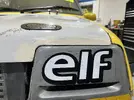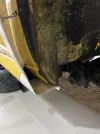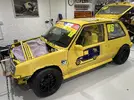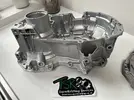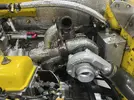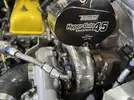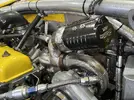There is more to life with TurboRenault.co.uk
You are using an out of date browser. It may not display this or other websites correctly.
You should upgrade or use an alternative browser.
You should upgrade or use an alternative browser.
Winter upgrades
- Thread starter Clarkey
- Start date
Clarkey
Well-Known Member
The goodies keep coming.
Massive thanks to the Oriental Club for this deign
Check out their fantastic menus and deliveries anywhere in the UK from the heart of London.

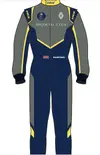

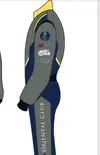
Massive thanks to the Oriental Club for this deign
Check out their fantastic menus and deliveries anywhere in the UK from the heart of London.

Oriental Club Dine at Home
A Premium Meal Delivery Service with Delivery Anywhere in UK Mainland and Isle of Wight.
www.orientalclubdineathome.com



Last edited:
Clarkey
Well-Known Member
Just seen this from pure motorsport
This looks like a game changer for the guys pushing the JC5 boxes.
A grand all in with the fitting.
Going by what I’ve spent on gearboxes due to cracked casings….. BARGAIN.
Steve Swan
Well-Known Member
At a first glance it looks quite tricky. The ultimate may have been to incorporate another 2 bearings into the endcase with extensions into the existing shafts, but that's complex machining, with ground finishes and would involve taking the box to bits and putting holes in it, so not a bolt on fix.
Clarkey
Well-Known Member
We had 1 degree n/s and 3/4 degrees o/s before. We wore the outer third of the tyresThats a lot of camber! I've just upped the Vee from 1 to 2 degrees at the back to see how it reacts.
Like I said it’s a starting point, we can get the temps across the whole tyre after a decent session on the test day.
Steve Swan
Well-Known Member
Which suggests it want's more negative anyway. How stiff is the rear? Pretty solid I'm guessing, but it will still roll a bit, giving a need for increased negative. The only downside may be increased straightline instability at high speed. The toe in should help counteract that. That will be the 2 opposing handling traits, you need to find the sweet spot between them. Then you can start a thread on it and go round in circles (quite literally) for the rest of your life......We had 1 degree n/s and 3/4 degrees o/s before. We wore the outer third of the tyres
Like I said it’s a starting point, we can get the temps across the whole tyre after a decent session on the test day.
Good luck with it and for the season ahead.
Clarkey
Well-Known Member
We don’t run the car super stiff Steve.Which suggests it want's more negative anyway. How stiff is the rear? Pretty solid I'm guessing, but it will still roll a bit, giving a need for increased negative. The only downside may be increased straightline instability at high speed. The toe in should help counteract that. That will be the 2 opposing handling traits, you need to find the sweet spot between them. Then you can start a thread on it and go round in circles (quite literally) for the rest of your life......
Good luck with it and for the season ahead.
We have the thicker ARB and torsion bars and run it 3/4 stiff in the dry.
The car is very snappy on the rear when solid, which drains the confidence.
Haha…..a thread on set up would certainly be interesting with different opinions and driving styles
Thank you
Steve Swan
Well-Known Member
It's always a balancing act, more camber= better corner grip = increased roll= less camber= more camber needed = less contact patch on road on straight = more twitch on turn in = more toe in to counteract, but with diminishing results.
Then it goes wet and you need to start again .......
Then there's driver preference for over/understeer before imminent disaster happens.
Well worth playing with rear settings as the more you can get the rear to shoulder some of the responsibility for keeping the car on track, the more you take off the already overworked front end, which is having to deal with all of the acceleration force, most of the braking force and steering forces, so getting the rear to help a bit, helps the overall picture. Lots of issues at one end of the car can be caused by the opposite end.
Ernest Hemingway Said "There are only three sports: bullfighting, motor racing, and mountaineering; all the rest are merely games"
Then it goes wet and you need to start again .......
Then there's driver preference for over/understeer before imminent disaster happens.
Well worth playing with rear settings as the more you can get the rear to shoulder some of the responsibility for keeping the car on track, the more you take off the already overworked front end, which is having to deal with all of the acceleration force, most of the braking force and steering forces, so getting the rear to help a bit, helps the overall picture. Lots of issues at one end of the car can be caused by the opposite end.
Ernest Hemingway Said "There are only three sports: bullfighting, motor racing, and mountaineering; all the rest are merely games"
Duncan Grier
Well-Known Member
Looks like it means business 

Clarkey
Well-Known Member
Not quite but getting there.ready for action!
Still a few jobs to do…
Waiting on the fibreglass parts from paint shop.
New front bearings to fit
New centre section of exhaust
Fit the rotary dial.
Similar threads
- Replies
- 15
- Views
- 1K


